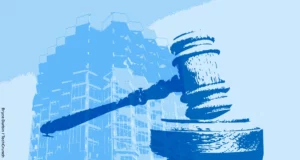
The Year Of The Deepfake: Combating Digital Deception In 2024 And Beyond
As we wrap up 2024, it’s clear that one of the most significant threats to digital security and public trust has emerged: deepfakes. These AI-generated manipulated media have become a pervasive menace, flooding news cycles with scams involving fake celebrity endorsements, misinformation dissemination and financial frauds. The stakes are alarmingly high, as more aspects of our daily lives move online, necessitating unprecedented vigilance.
Regulatory efforts are still in their early stages, with no federal law addressing the creation, dissemination and use of deepfakes. While some states have enacted legislation, these measures are insufficient to tackle the scale and complexity of this problem. However, technological defenses are starting to emerge. Google DeepMind has open-sourced its AI text watermark tool, allowing anyone to utilize it, but it’s not foolproof as it only identifies AI-generated text and doesn’t extend to audio or video manipulations.
Facebook and Instagram are piloting new facial recognition tools to swiftly restore compromised accounts and identify fake celebrity endorsements. While promising, these efforts are still in the pilot phase, with limitations that exclude certain situations involving user-generated content and platform sharing. McAfee has also launched a tool to help users verify whether audio in videos on platforms like YouTube or X is genuine or fabricated. Similarly, Hiya’s Google Chrome extension uses AI to determine if an on-screen voice or audio is authentic or counterfeit.
However, these solutions are insufficient, as they only address narrow subsets of the problem. AI-manipulated videos and images can still slip by undetected. To combat this issue effectively, we need more advanced and widespread tools capable of quickly and accurately detecting deepfakes, particularly as they become increasingly sophisticated.
Governments, tech companies, financial institutions and law enforcement must work together to create standardized strategies, share best practices and build stronger partnerships to mitigate the risks associated with this technology. The need for cooperation is urgent, as no single industry can address this challenge alone.
Filling the gap in deepfake detection tools requires more than just individual efforts; it demands a collaborative response from all stakeholders. This includes governments, tech companies, financial institutions and law enforcement agencies working together to create standardized protocols, share best practices and strengthen partnerships.
In conclusion, the time to act is now. As we move forward into 2024 and beyond, we must collectively address this issue before it becomes insurmountable.
Source: www.forbes.com


